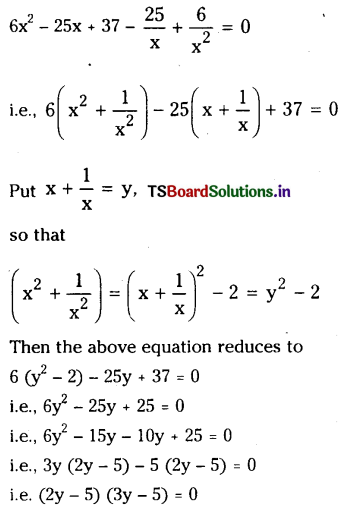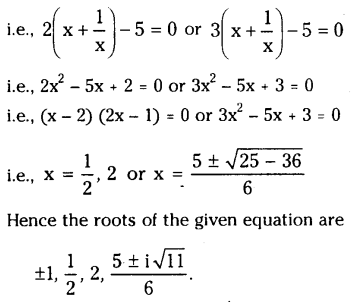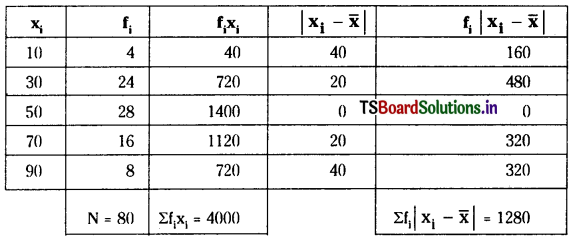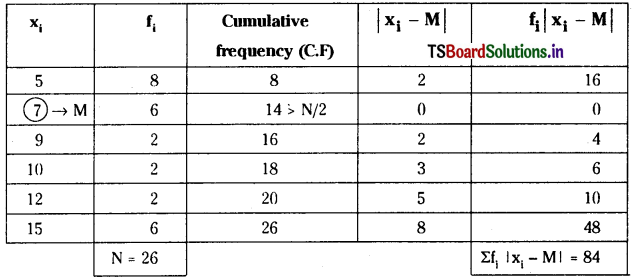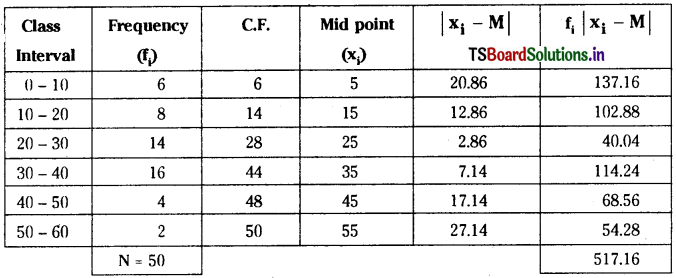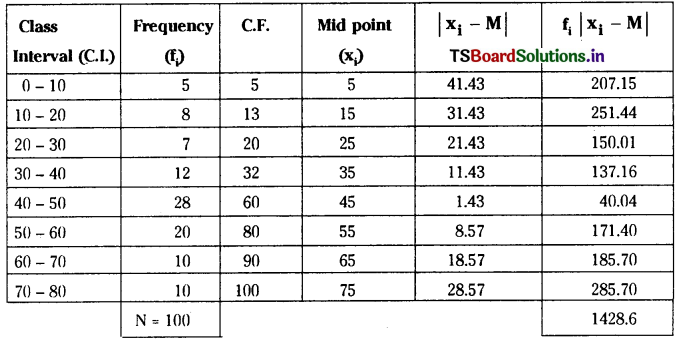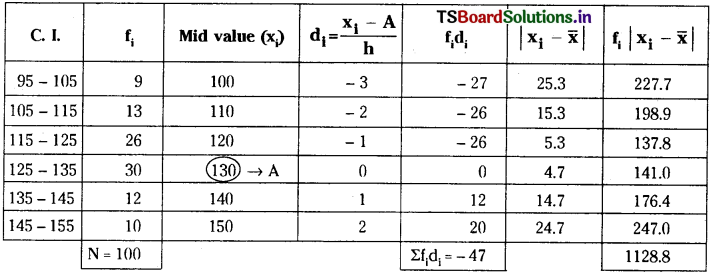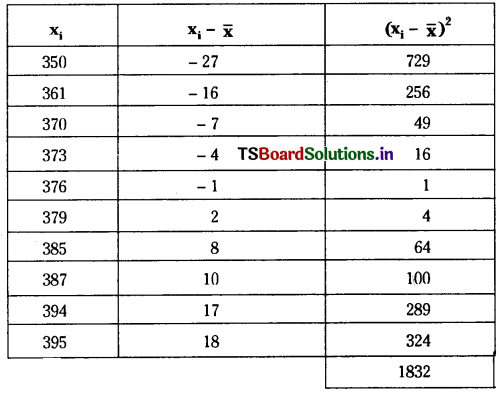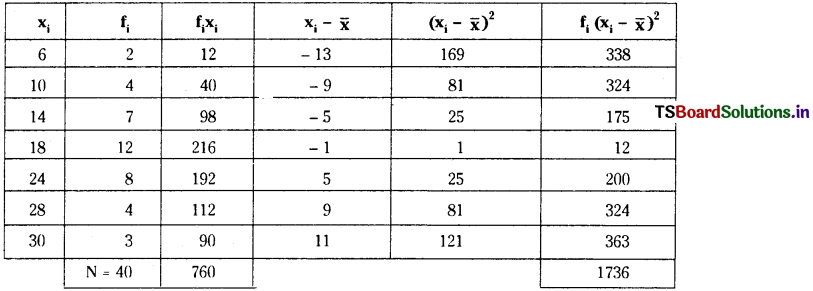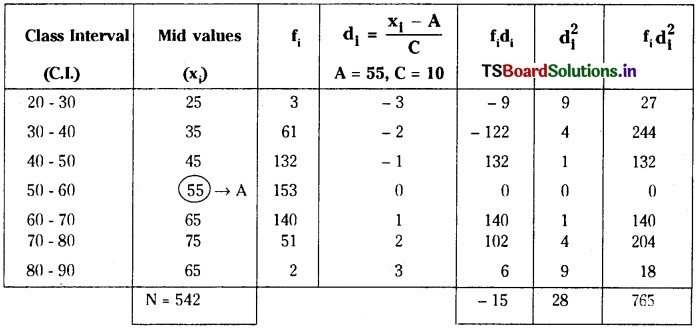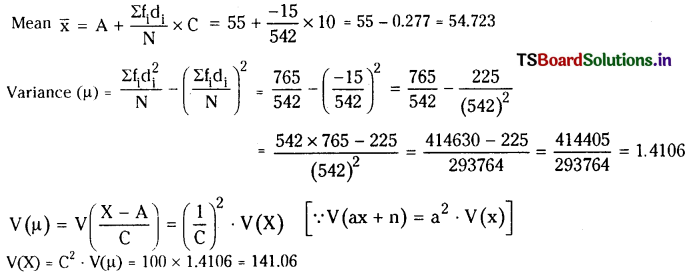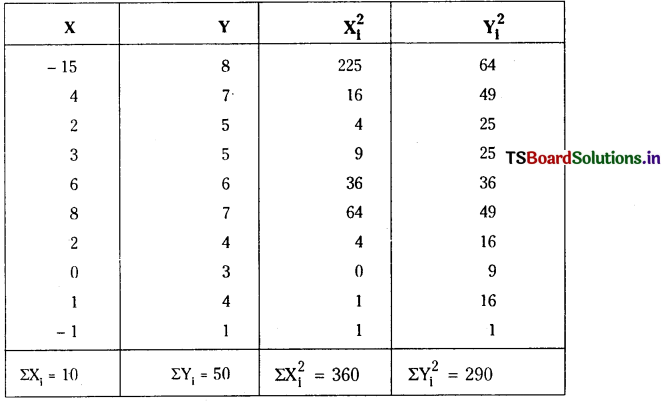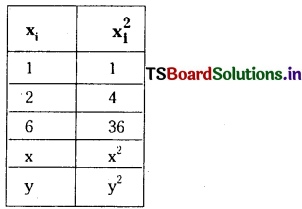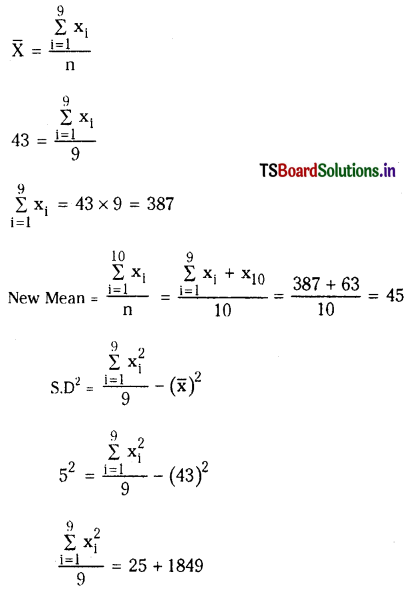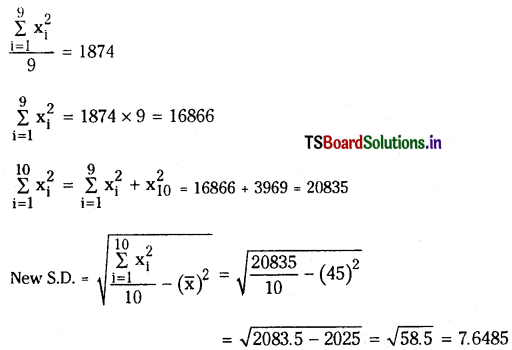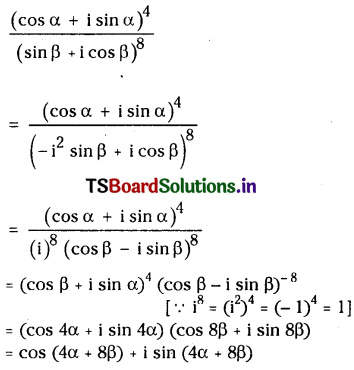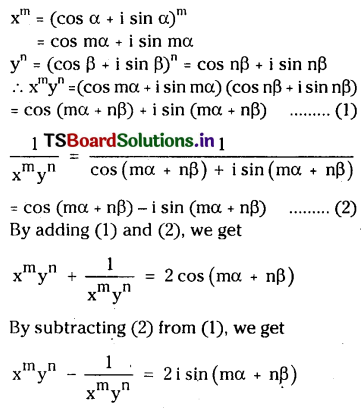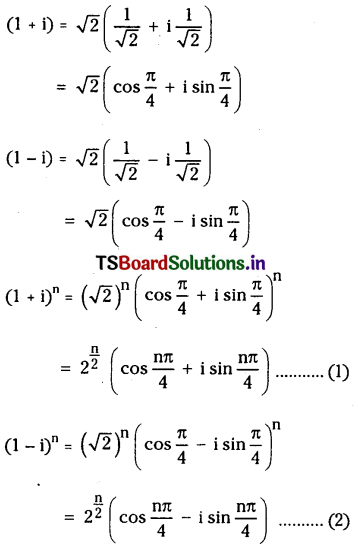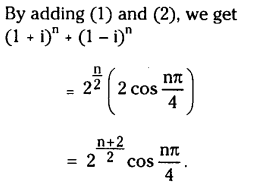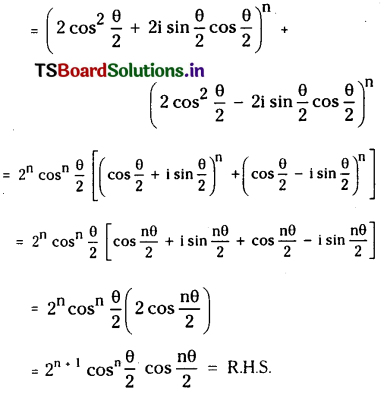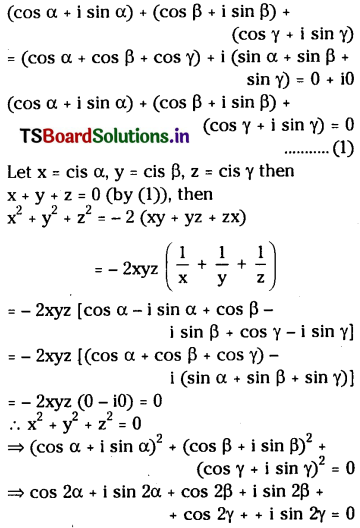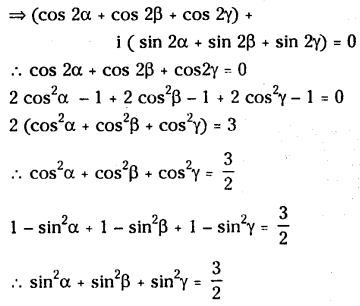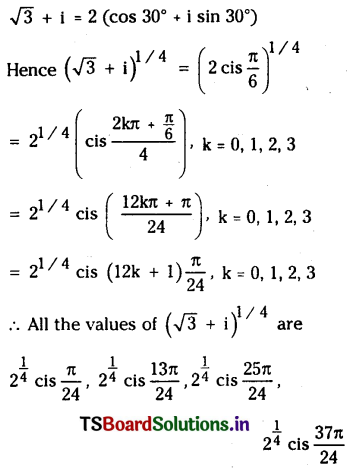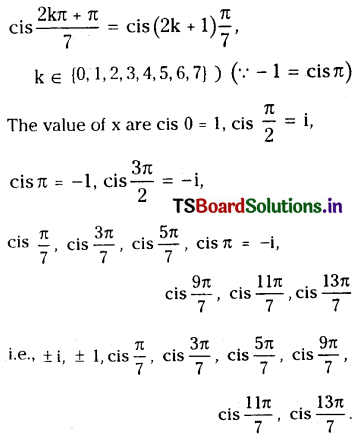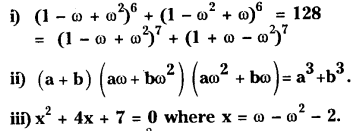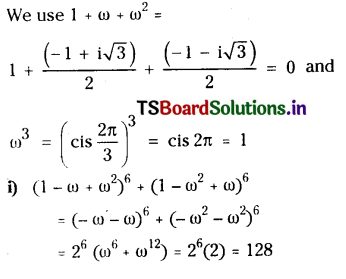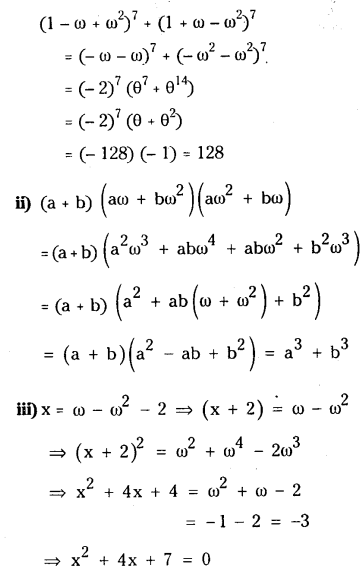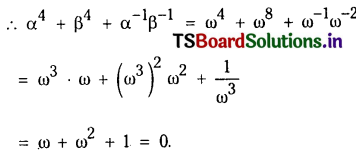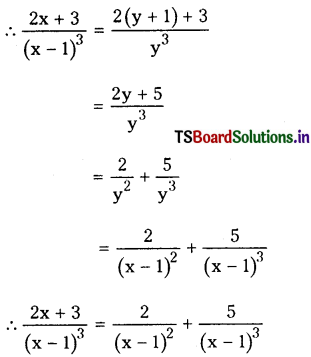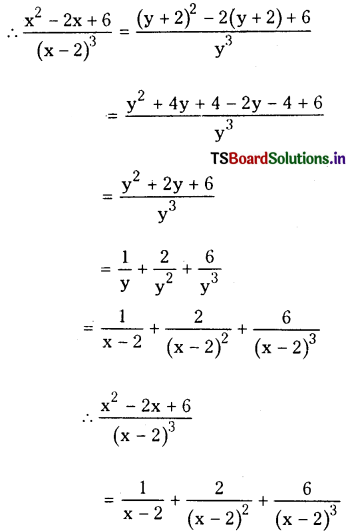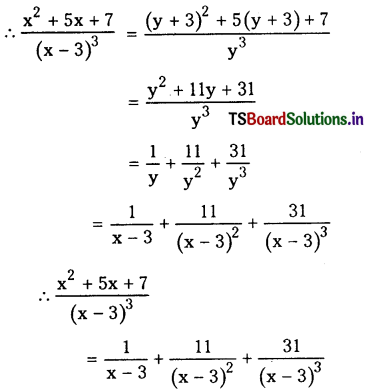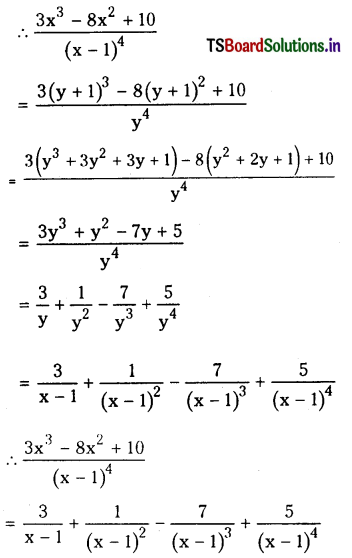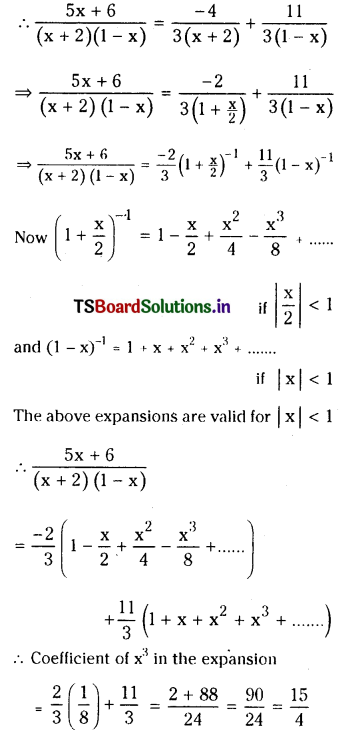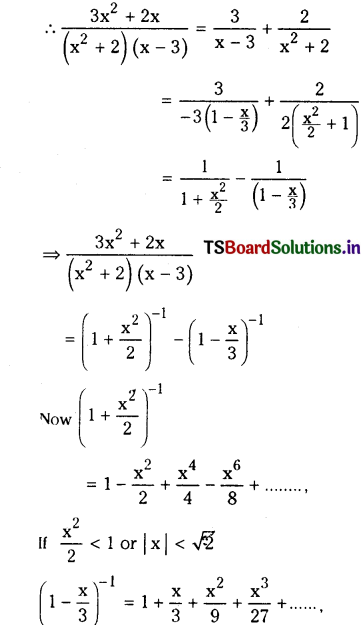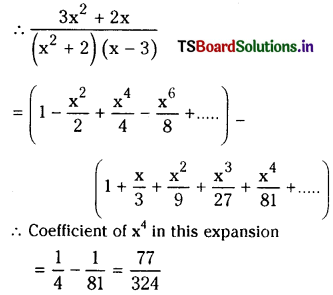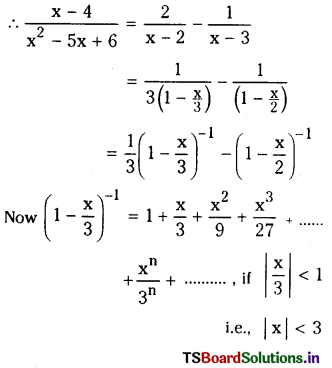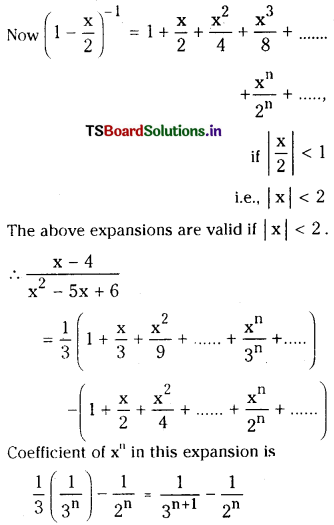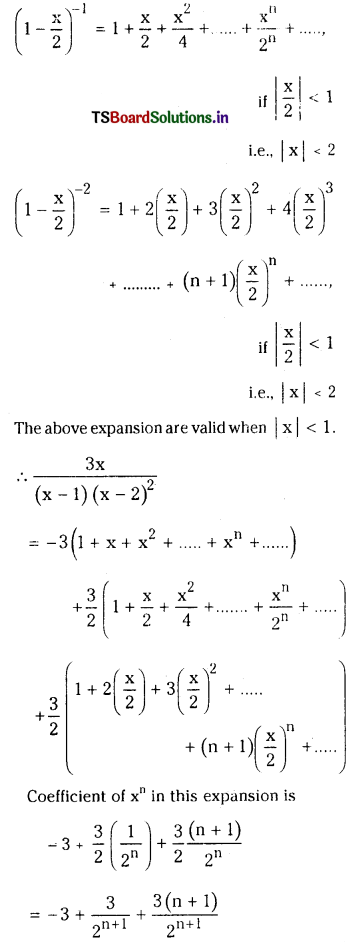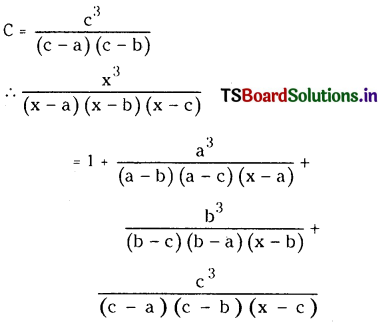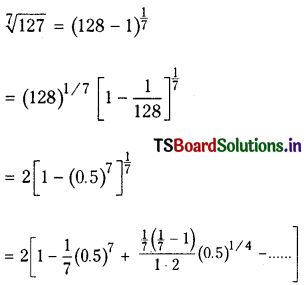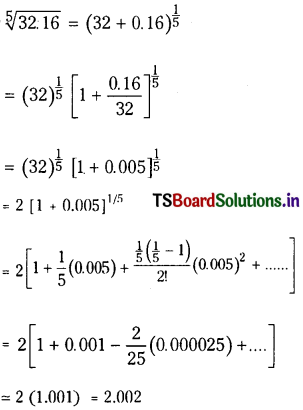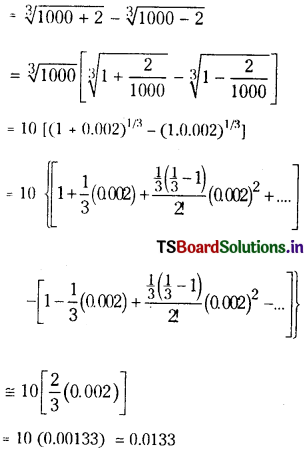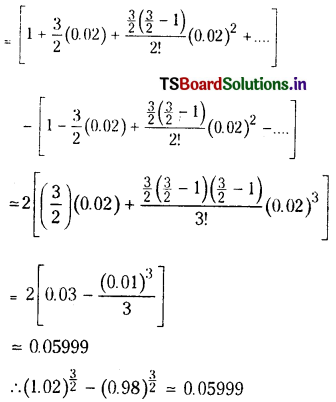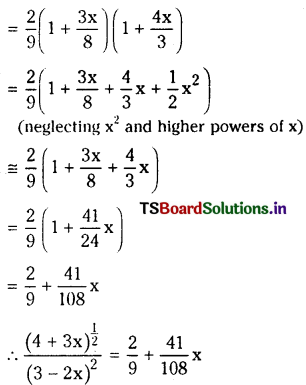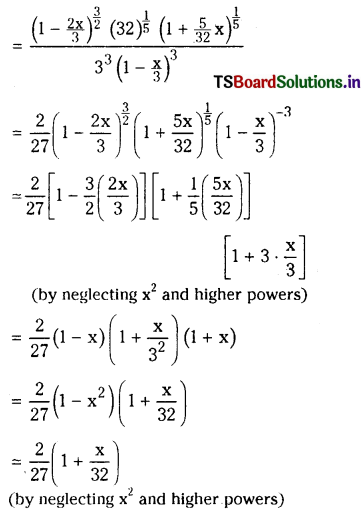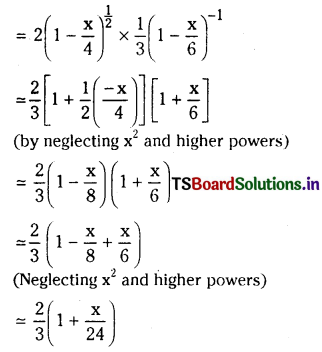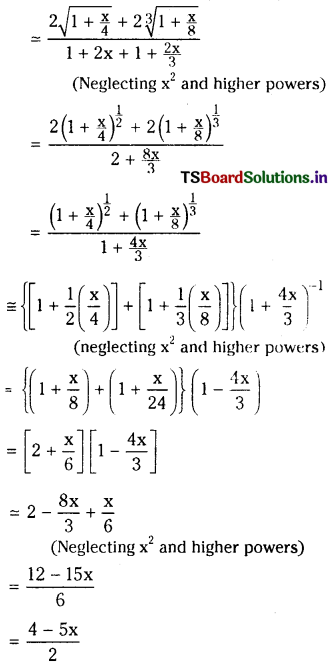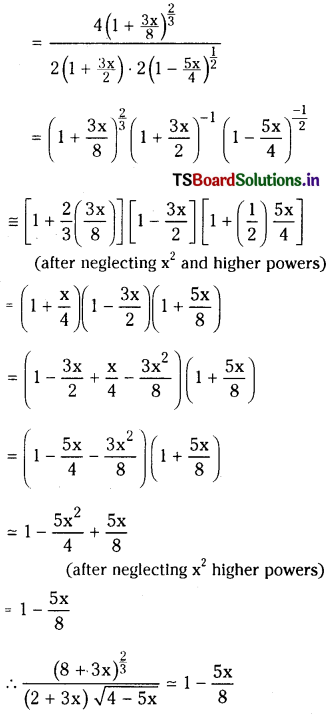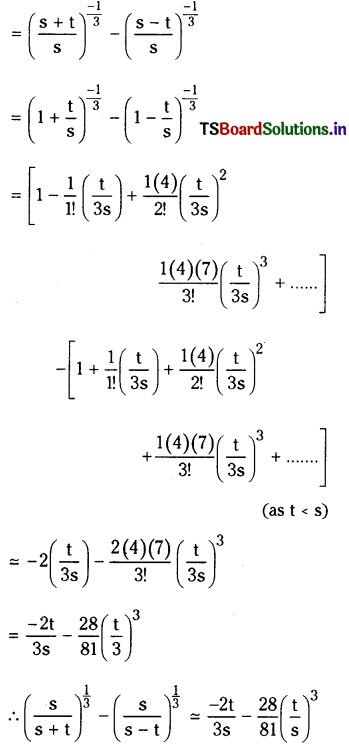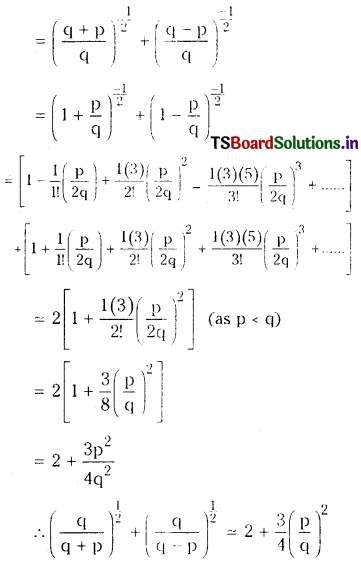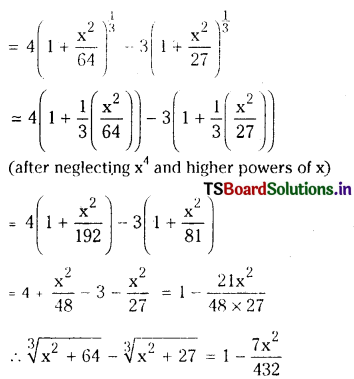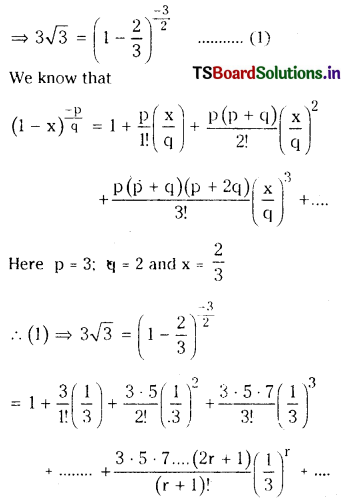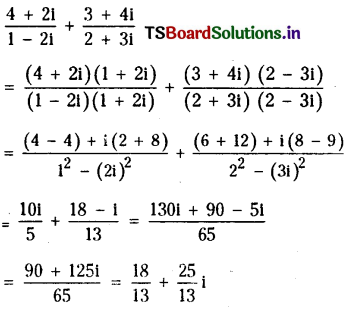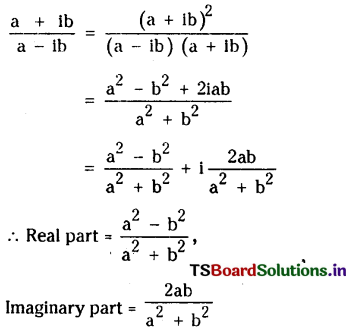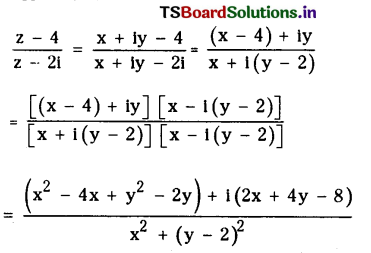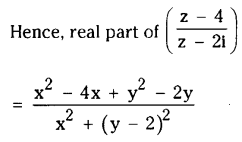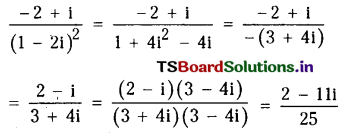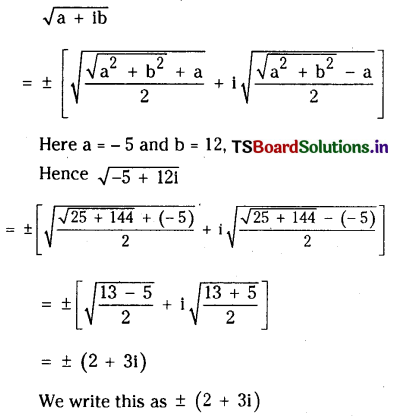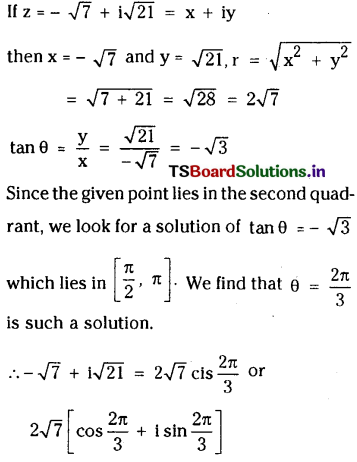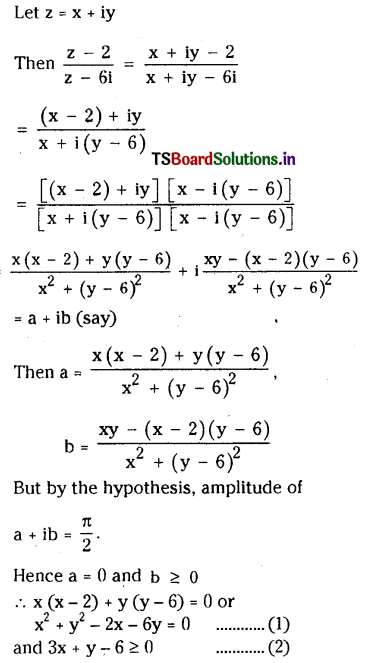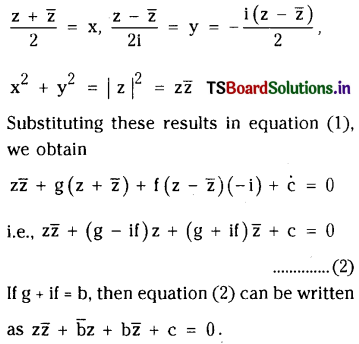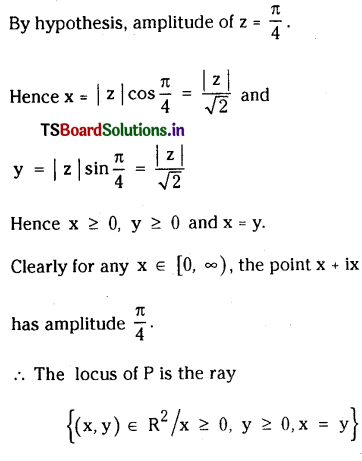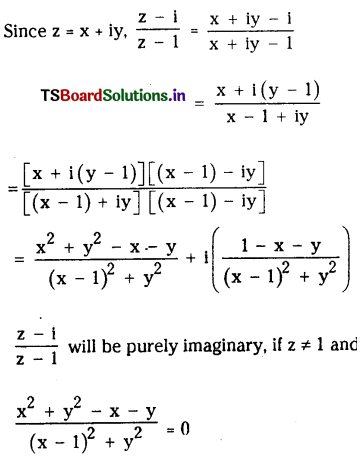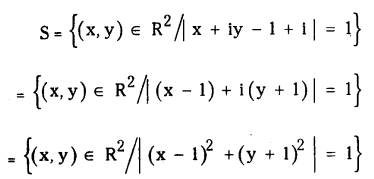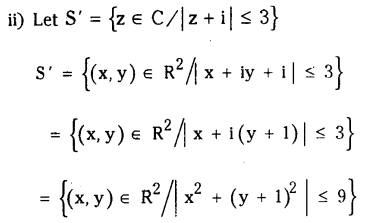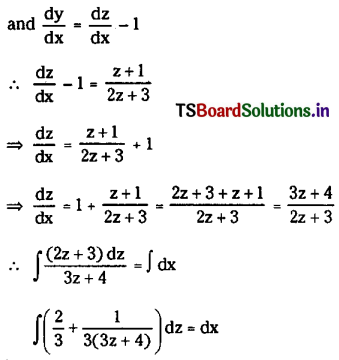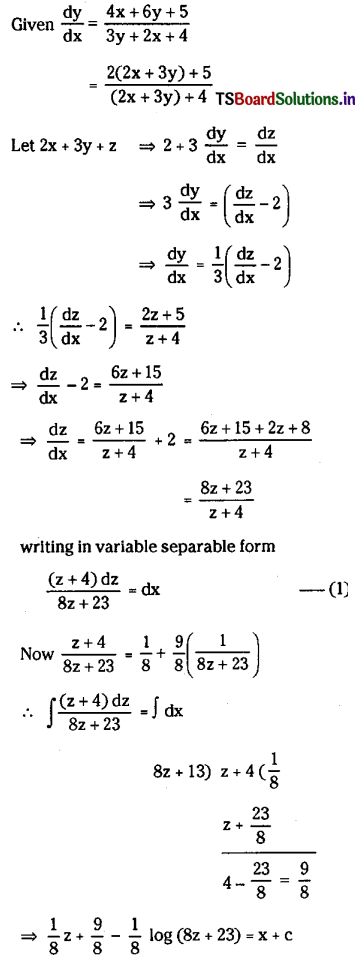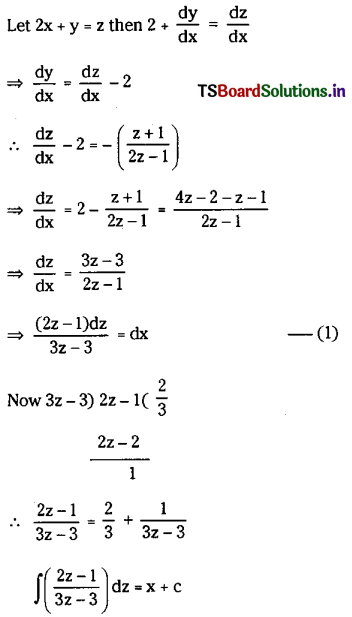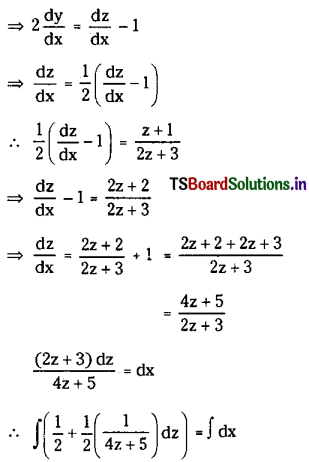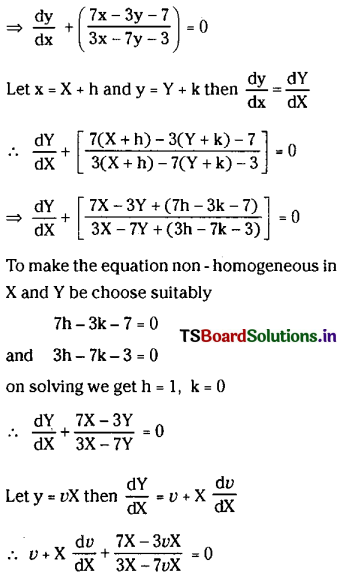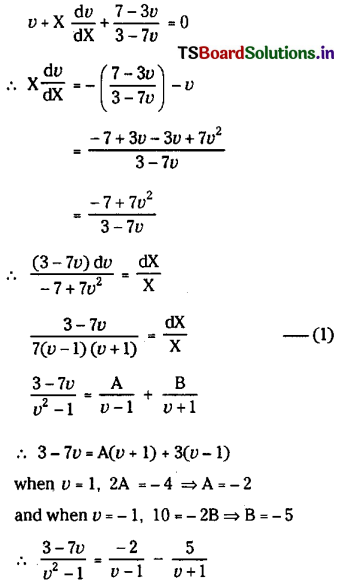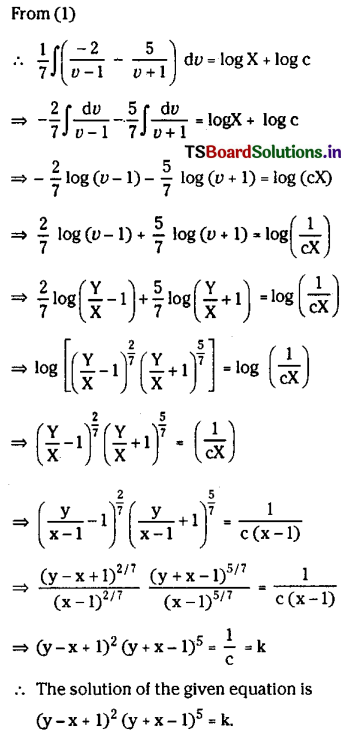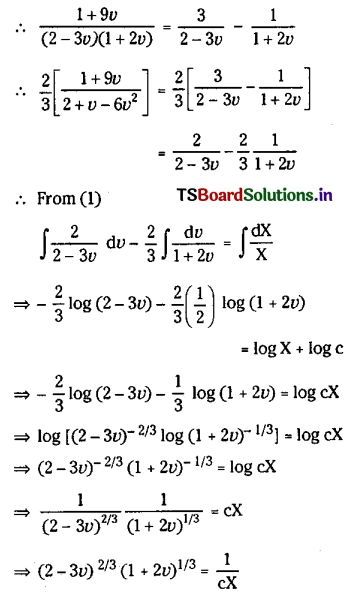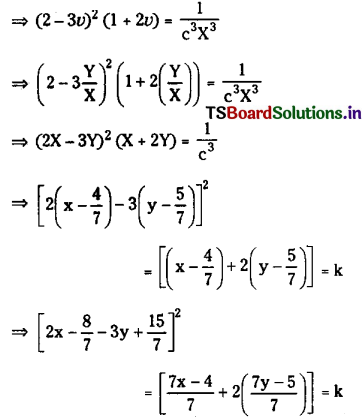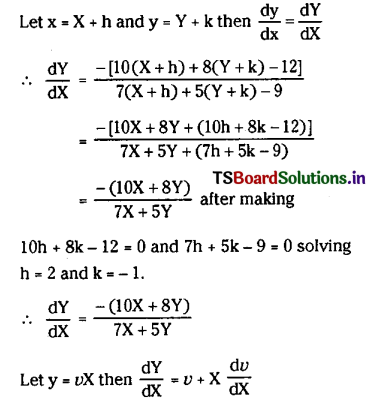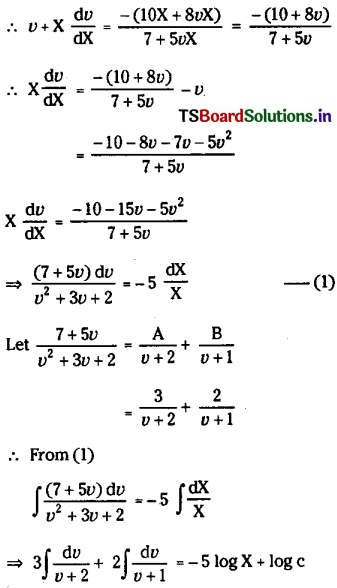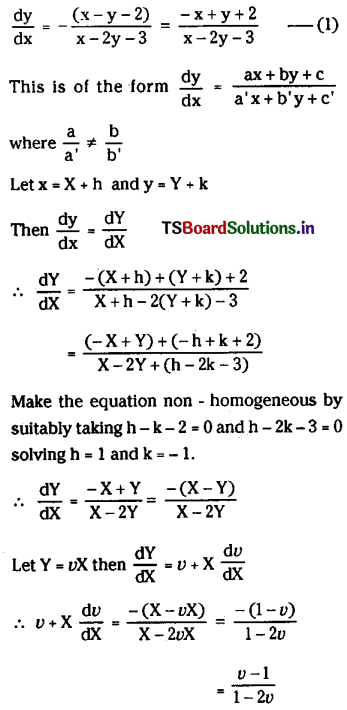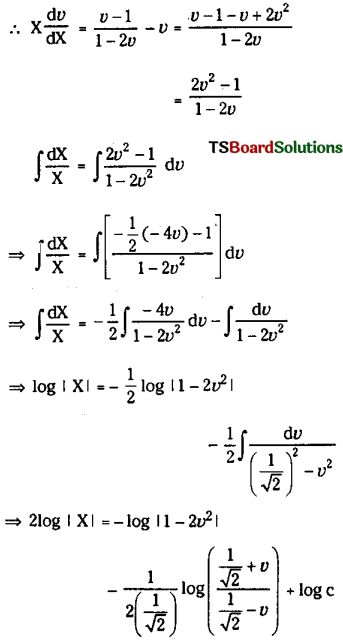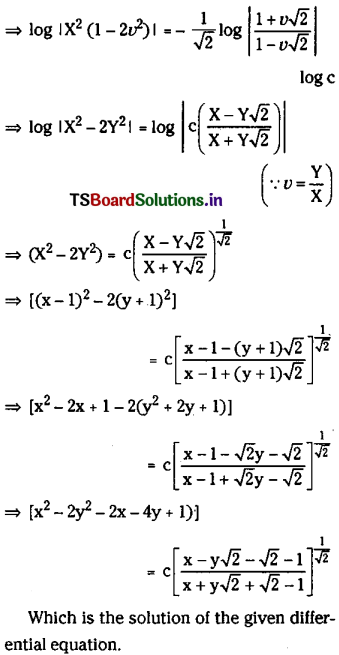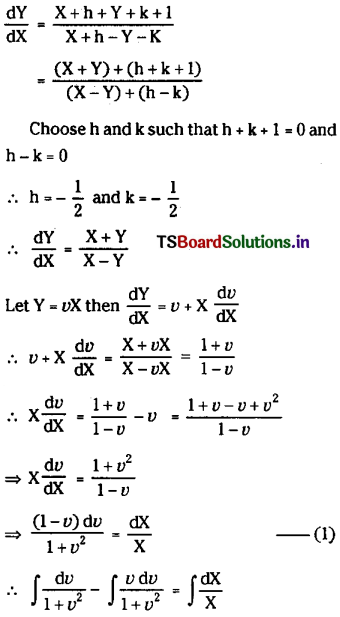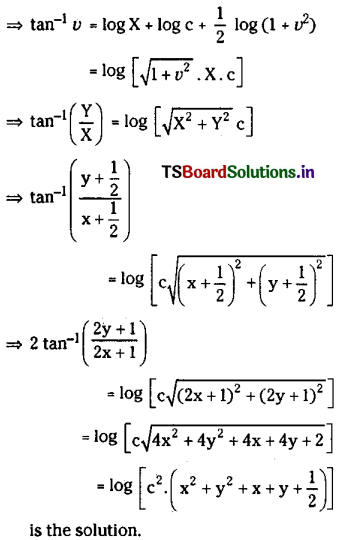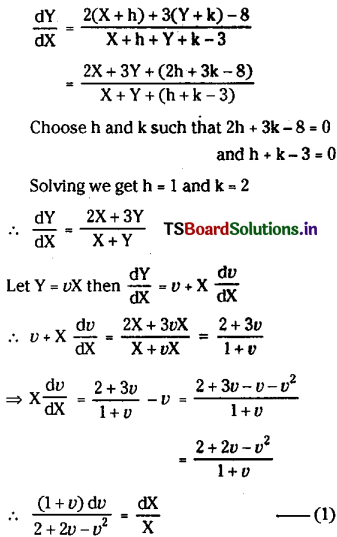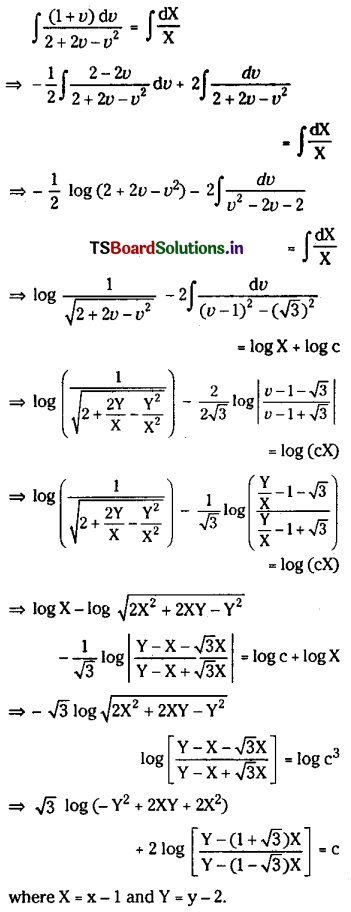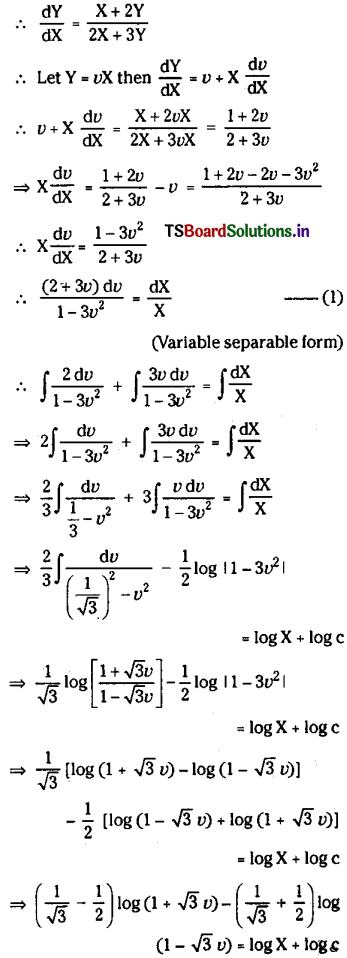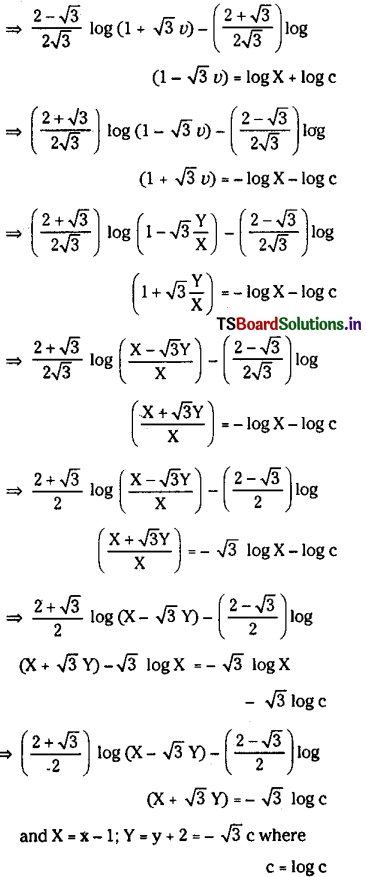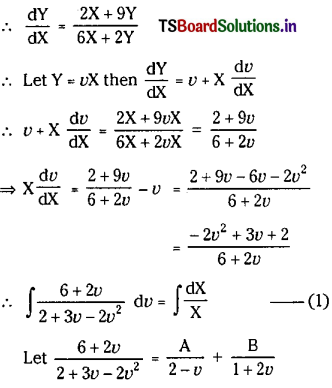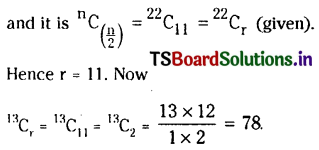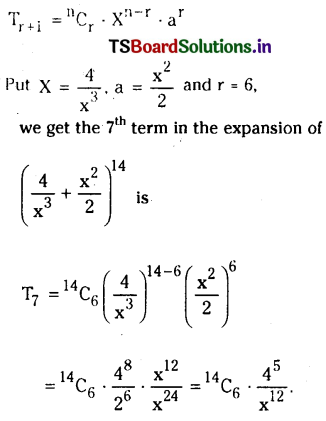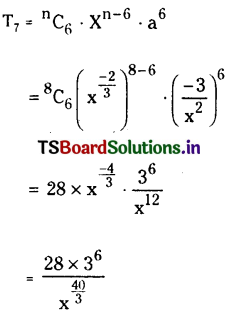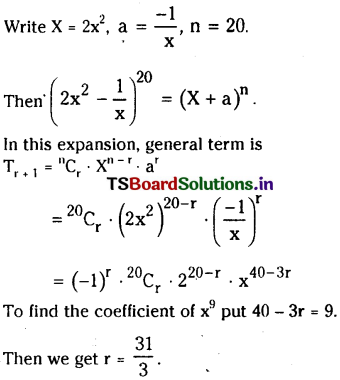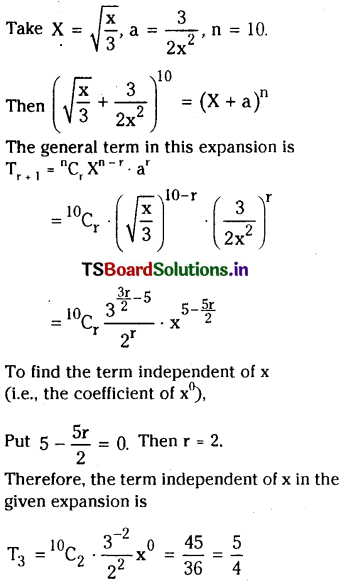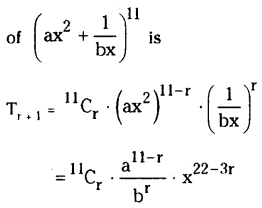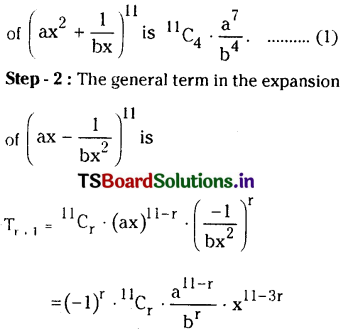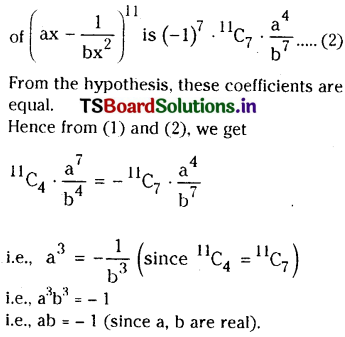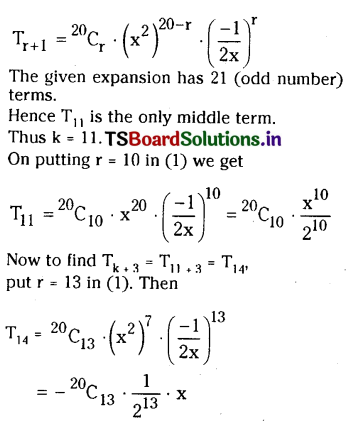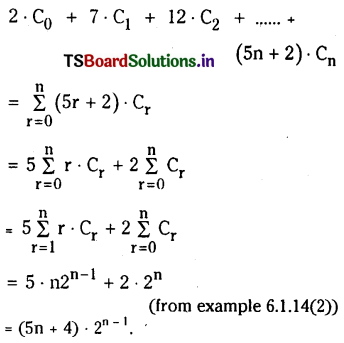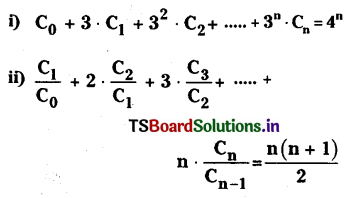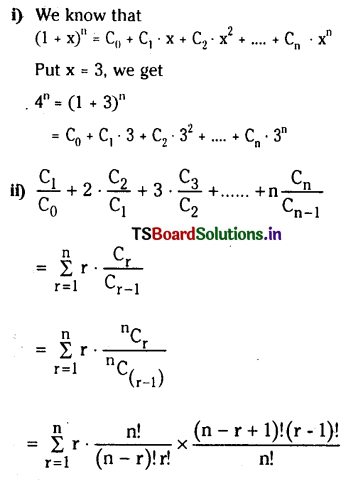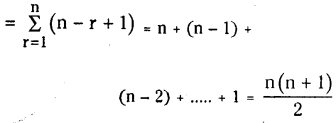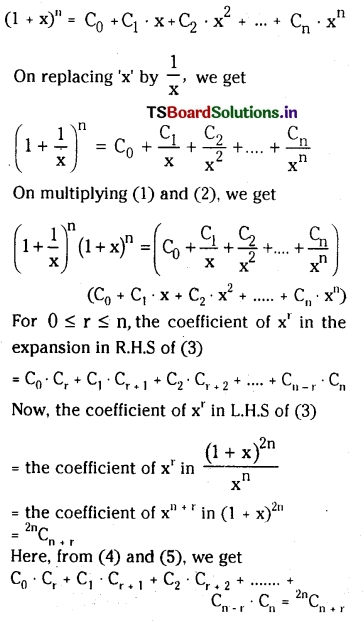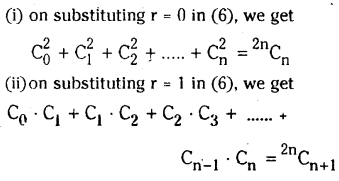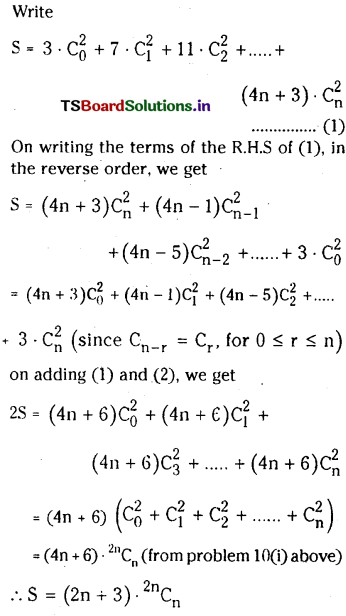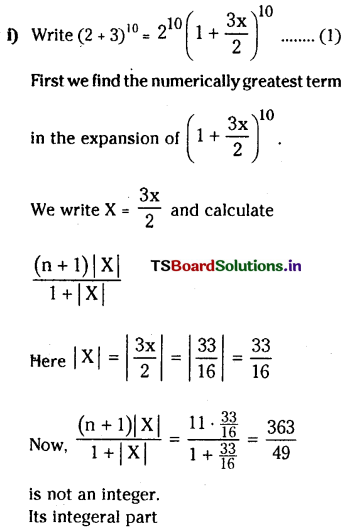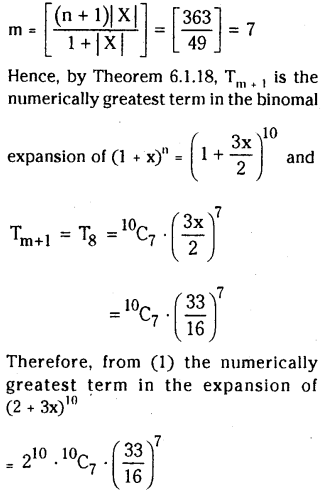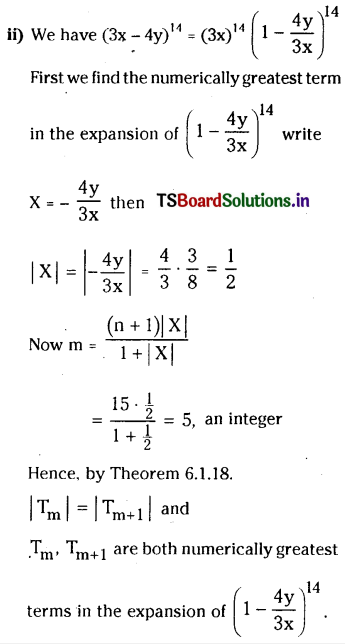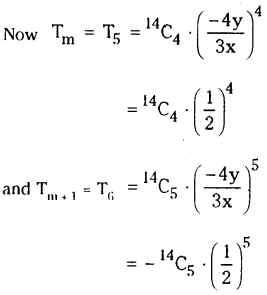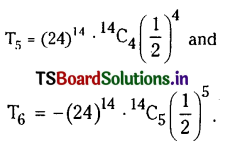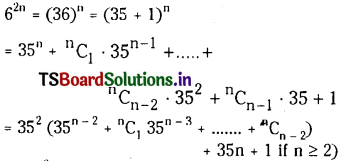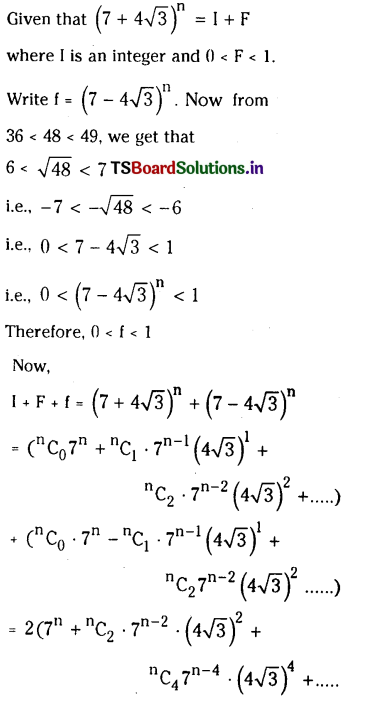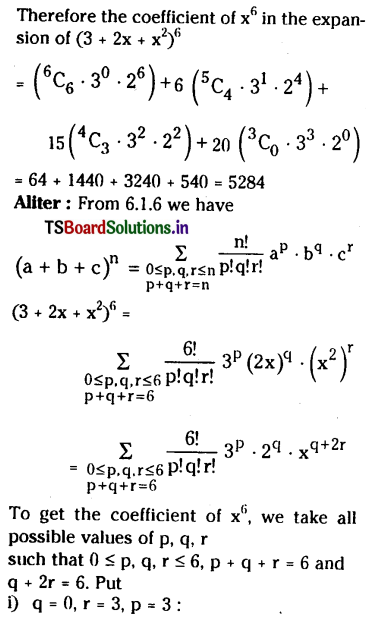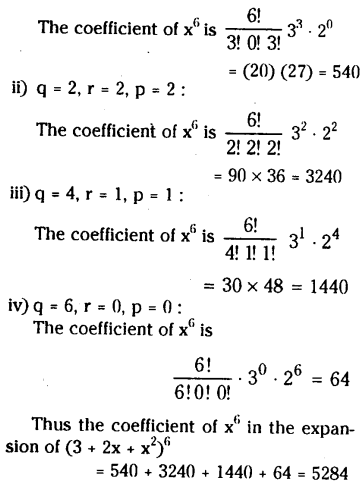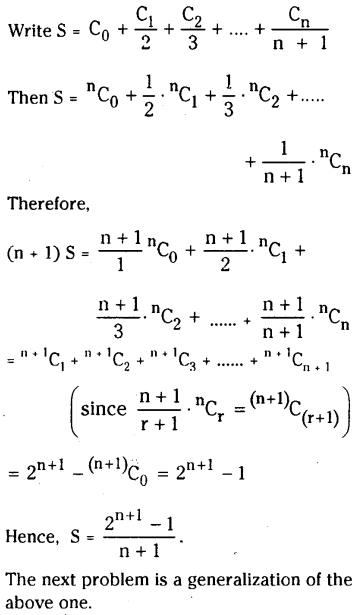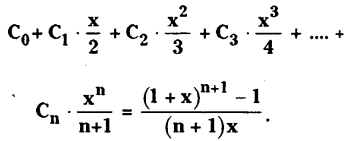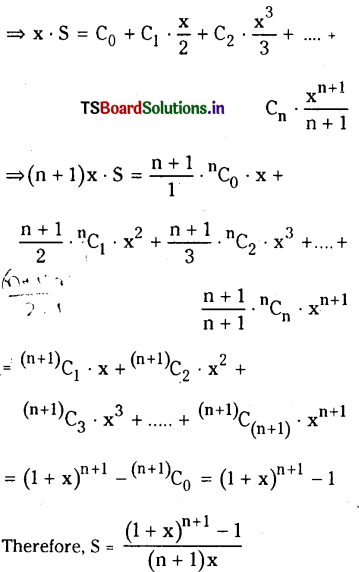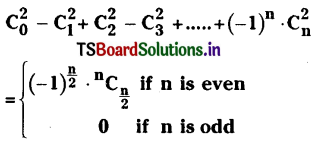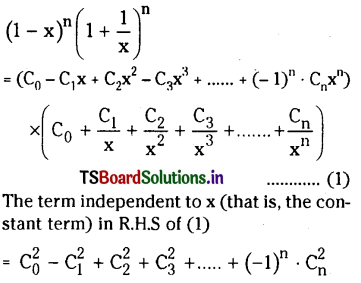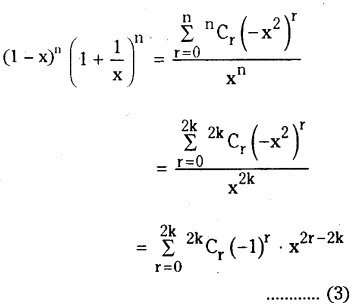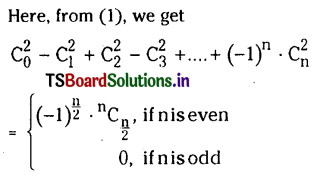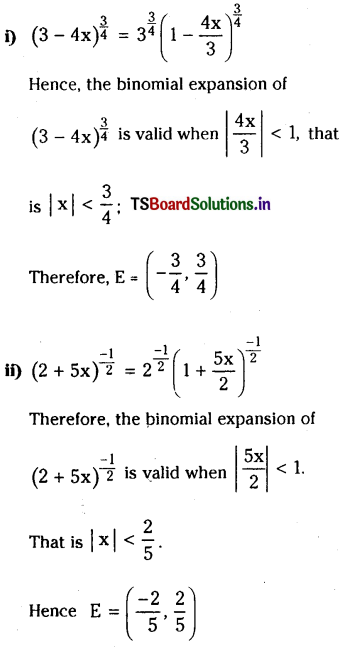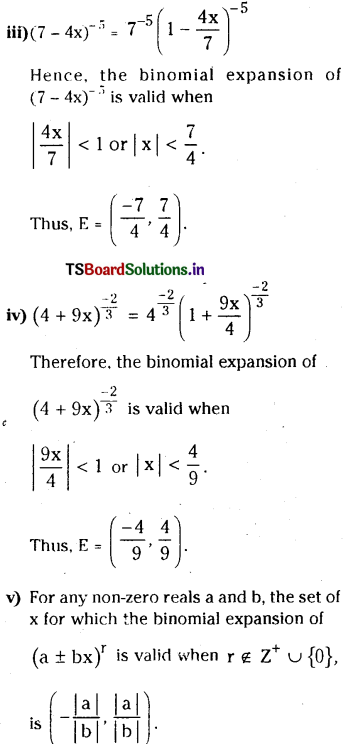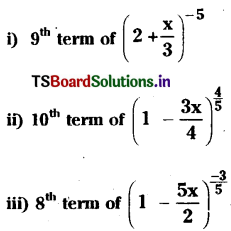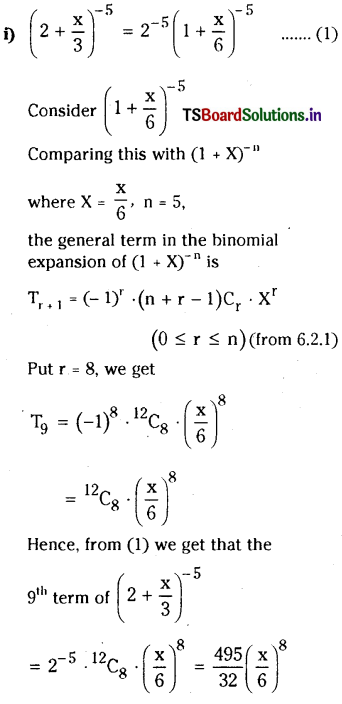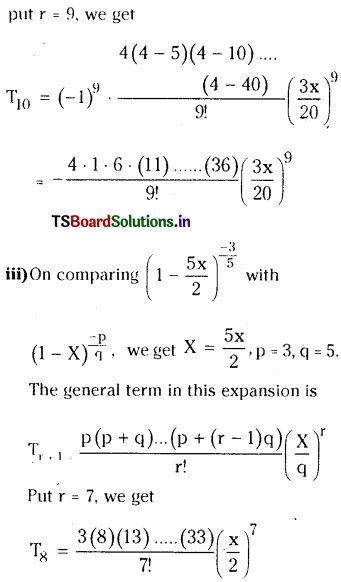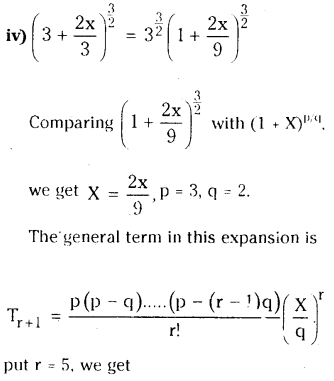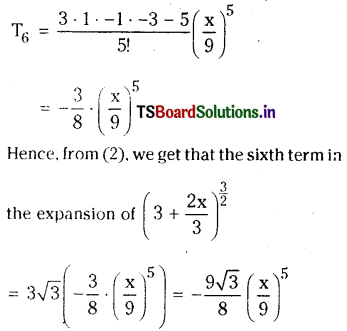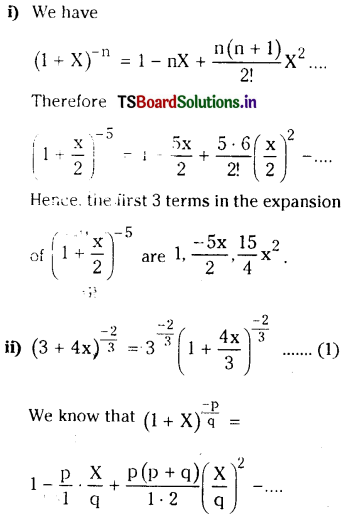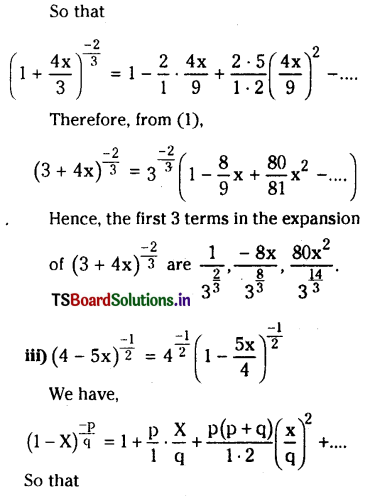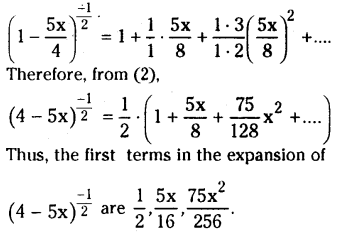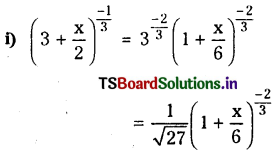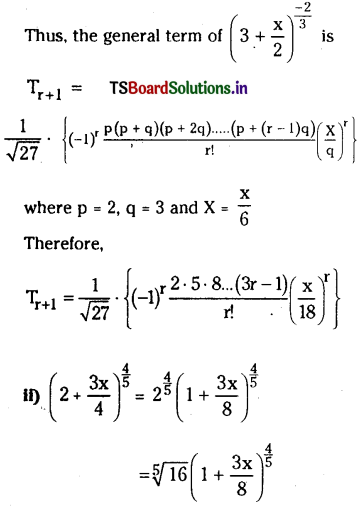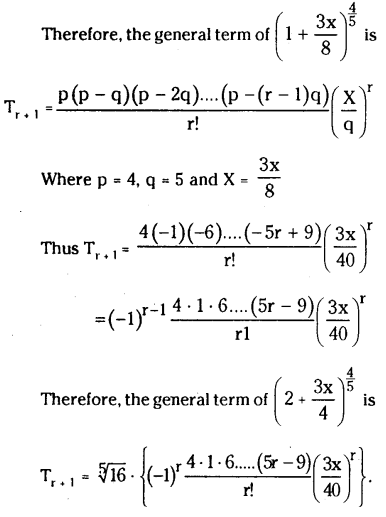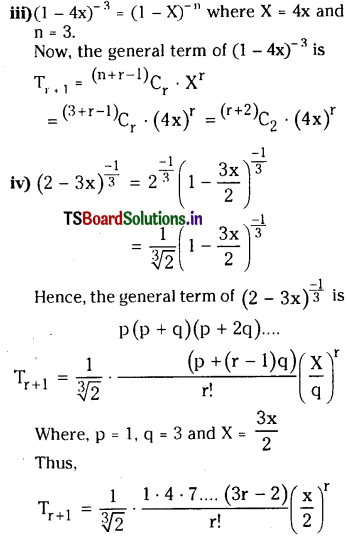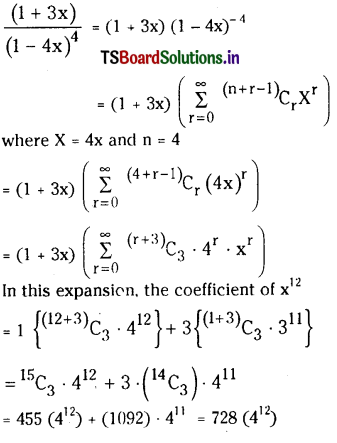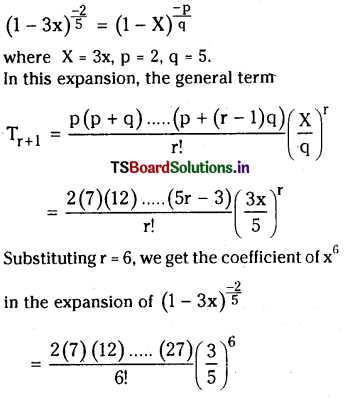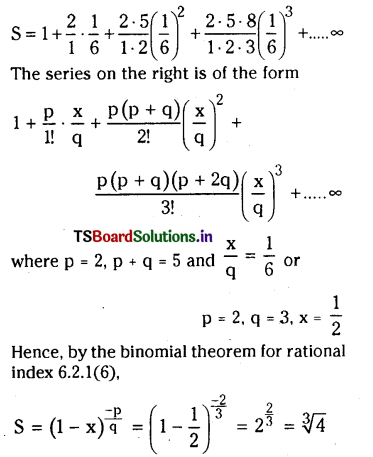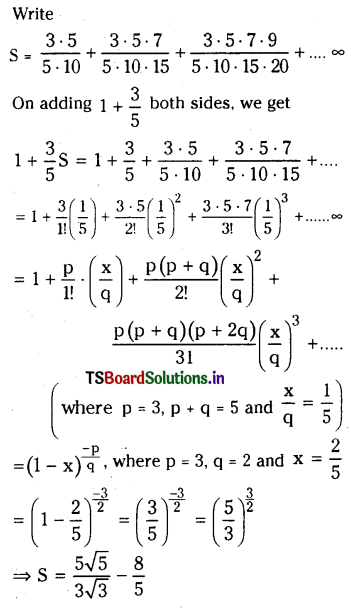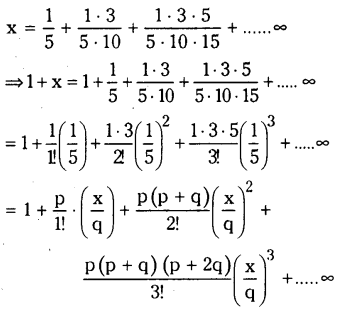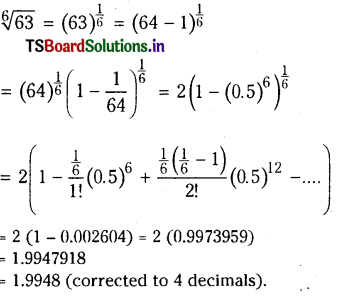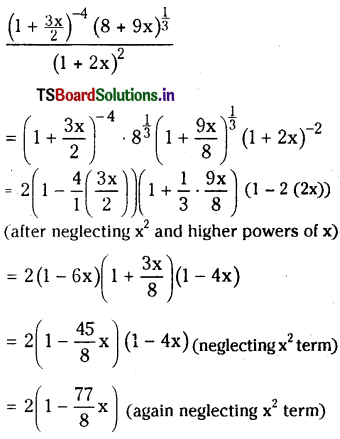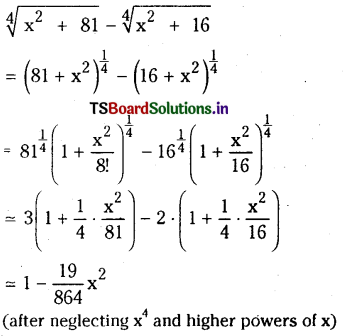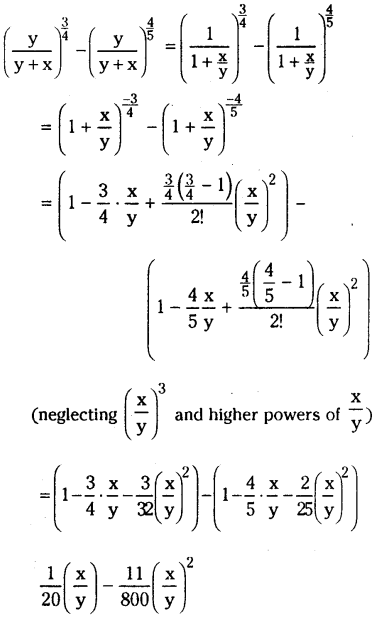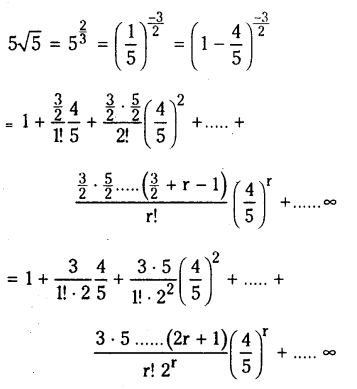Students must practice these TS Inter 2nd Year Maths 2A Important Questions Chapter 4 Theory of Equations to help strengthen their preparations for exams.
TS Inter 2nd Year Maths 2A Theory of Equations Important Questions
Question 1.
Form the monic polynomial eduation of degree 3 whose roots are 2, 3 and 6. Given roots of required polynomial are
2, 3 and 6.
Solution:
We know that monic polynomial those roots of α, β and γ is (x -α) (x -β) (x -γ) = 0.
∴ Equation of required monk polynomial is
(x – 2)(x – 3)(x – 6) = 0
on simplification, it becomes
x3 – 11x2 + 36x – 36 = 0.
![]()
Question 2.
Find the relations between the roots and the coefficients of the cubic equation
3x2 – 10x2 + 7x + 10 = 6.
Solution:
Given cubic equation is
3x2 – 10x2 + 7x + 10 = 0
On dividing the equation by ‘3’ we get,
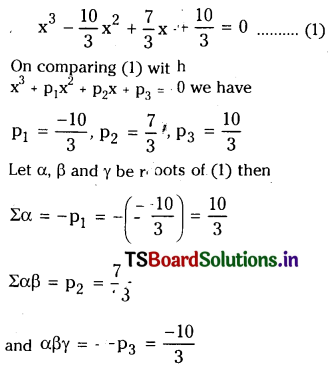
Question 3.
Write down the relations between the roots and the coefficients of the biquadratic equation :
x4– 2x3 + 4x2 + 6x – 21 = 0.
Solution:
Given equation is x4– 2x3 + 4x2 + 6x – 21 = O
On comparing (1) with
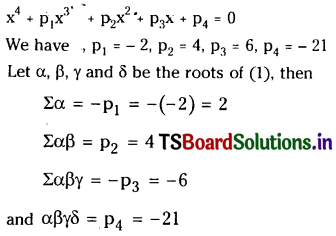
Question 4.
If 1,2,3 and 4 are the roots of x4+ax3+bx2+ cx + d = 0, then find the values of a, b, c and d.
Solution:
Given roots of the given polynomal equation are 1, 2, 3 and 4.
∴ x4+ax3+bx2+ cx + d ≡ (x-1)(x-2) (x – 3) (x – 4)
= x4 – 10x3 35x2 – 50x + 24
On comparing coellicients of like powers of we get,
a = – 10, b = 35, c = – 50, d = 24.
![]()
Question 5.
If a,b and c are the roots of x3-px2+qx – r = 0 and r ≠0 then find \(\frac{1}{a^2}+\frac{1}{b^2}+\frac{1}{c^2}\) in terms of p,q,r.
Solution:
Given a ,b and c are the roots of
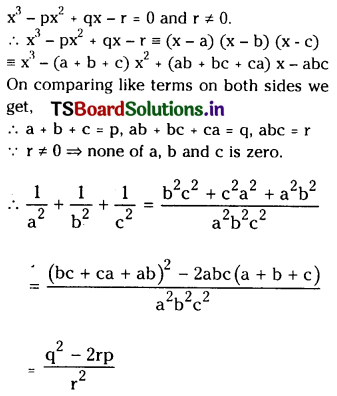
Question 6.
Find the sum of the squares and the sum of the cubes of the roots of the equation
x3 – px2 + qx – r = 0 in terms of p, q, r.
Solution:
Let α, β and γ be roots of the given equation x3 – px2 + qx – r = 0 ……………..(1)
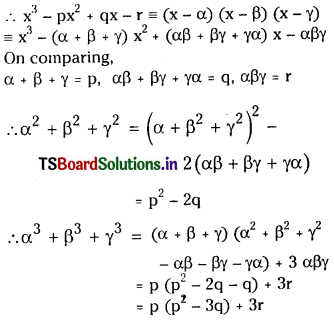
![]()
Question 7.
Obtain the monic cubic equation, whose roots are the squares of the roots of the equation x3 + p1x3 + p2x + p3 = 0.
Solution:
Let α, β and γ be the roots of the given equation x3 + p1x3 + p2x + p3 = 0 ………………… (1)
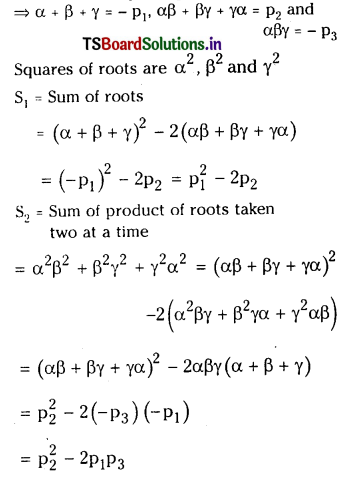
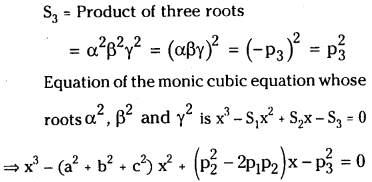
![]()
Question 8.
Let α, β and γ be the roots of x3+px2+qx+r = 0. Then find
(i) Σα2
(ii) \(\Sigma \frac{1}{\alpha}\) ,If α, β,γ are non-zero
(iii) Σα3
(iv) Σβ2γ2
(v) (α+β)(β+γ)(γ+α)
Solution:
Let α, β, and γ be the roots of equation x3+px2+qx+r = 0 ……………….(1)
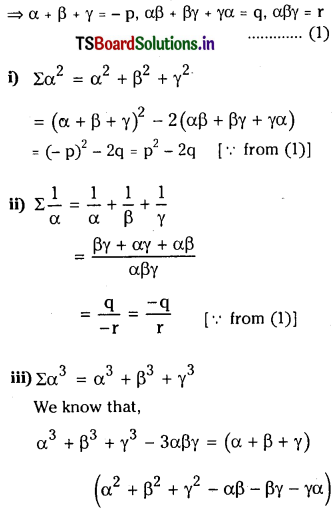
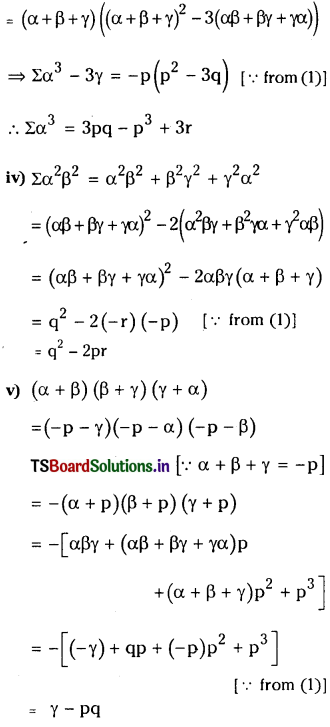
![]()
Question 9.
If α, β, γ are the roots of x3 + ax2 + bx + c = 0, then find ∑α2β + ∑αβ2.
Solution:
Given α, β and γ are the roots of
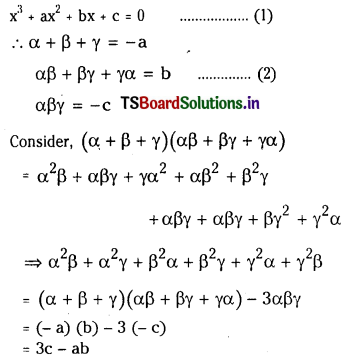
Question 10.
If α, β, γ are the roots of x3 + px2 + qx + r = 0, then form the monic cubic equation whose rools are
α(β+ γ),β(y+α), y(α+ β).
Solution:
Given a, and y are the roots of
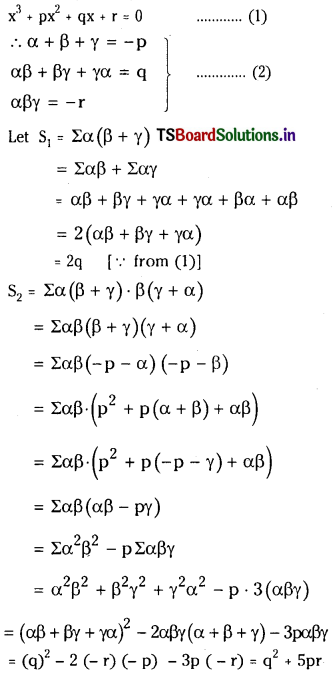
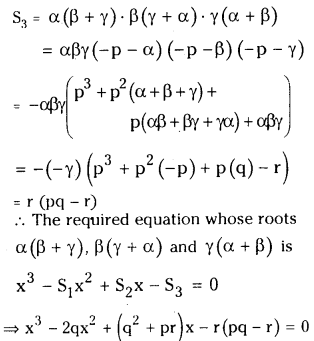
Question 11.
Solve x3 – 3x2 – 16x + 48 = 0.
Solution:
Let f(x) = x3 – 3x2 – 16x + 48
By inspection, we see that
f(3)= 27- 27 – 48+48 = 0
Hence 3 is a root of f(x) = 0
Now we divide 1(x) by (x-3), using synthetic division.

Thus the quotient is (x2 – 16) and the remainder is 0.
Therefore f(x) (x – 3) (x2 – 16)
= (x – 3) (x – 4) (x 4)
Hence 3, – 4, 4 are the roots of the given equation.
Question 12.
Find the roots of x4 – 16x3 + 86x2 – 176x + 105 = 0.
Solution:
Let f(x) = x4 – 16x3 + 86x2 – 176x + 105
By inspection we see that,
f(1)= 1- 16+86 – 176+ 105=0
Hence 1 is a root of 1(x) = 0
Now we divide f(x) by (x – 1), using synthetic division.

Therefore
x4 – 16x3 + 86x2 – 176x + 105
(x – 1)(x3-15x2 + 71x – 105) ……………… (1)
Let g(x) = x3 – 15x2 + 71x – 105
By inspection g(3) = 0.
Hence 3 is a root of g(x) = 0.
Now we divide g(x) by (x -3),
using synthetic division.

Therefore g(x) (x – 3) (x2 – 12x + 35) ……………. (2)
From (1) and (2),
f(x) (x – 1) (x – 3) (x2 – 12x + 35)
= (x – 1) (x – 3) (x – 5) (x – 7)
Hence 1, 3, 5 and 7 are the roots of the given equation.
Now we solve equations when a relation between some of the roots is given.
![]()
Question 13.
Solve x3 – 7x2 +36 = 0 given one root being twice the other.
Solution:
Let α, β, γ be the three roots of the given equation and β = 2a.
Now we have α+β+γ = 7
αβ + βγ + γα = 0
αβγ = – 36
On substituting β =2α in the above equations, we obtain
3α + γ = 7 …………………… (1)
2α2+3αγ = 0 ……………………. (2)
2α2 γ = – 36 ……………………. (3)
On eliminating γ from (1) and (2), we have
2α2 + 3α (7 – 3α) = 0
i.e., α2 -3α = 0 or α(α -3) = 0
Therefore α = 0 or α = 3
Since α = 0 does not satisfy the given equation, we ignore this value.
Therefore α = 3 is a root of the given equation.
So, β = 6 (since β = 2α) and γ = – 2
Hence 3, 6, – 2 are the roots of the given equation.
Question 14.
Given that 2 is a root of x3 – 6x2+3x+10 = 0, find the other roots.
Solution:
Let f(x) x3 – 6x2+3x+10
Since 2 is a root of f(x) 0,
we divide f(x) by (x – 2)

Therefore
x3 – 6x2 – 3x + 10 = (x – 2) (x2 – 4x – 5)
= (x – 2) (x+1) (x-5)
Thus – 1, 2 and 5 are the roots of the given equation.
Question 15.
Given that two roots of 4x3 + 20x2– 23x + 6 = 0 are equal, find all the roots of the given equation.
Solution:
Let α, β, γ, and δ are the roots of
4x3 + 20x2– 23x + 6 = 0 ………………… (1)
Given that two roots of (1) are equal. Let β = α
Since α, β, γ are the roots of (1), we have
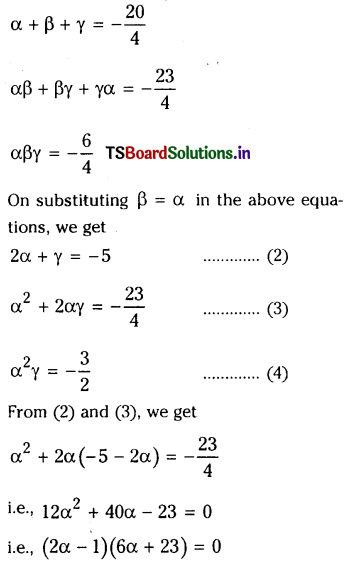
Therefore
x3 – 6x2 – 3x + 10 = (x – 2) (x2 – 4x – 5)
=(x – 2) (x+ 1) (x – 5)
Thus – 1, 2 and 5 are the roots of the given equation.
Therefore α = \(\frac{1}{2}\) or α = \(-\frac{23}{6}\)
On verification we get that α = \(\frac{1}{2}\) is a root of (1)
On substituting this value in (2), we get γ = – 6
Therefore \(\frac{1}{2}, \frac{1}{2},-6\) are the roots of (1).
![]()
Question 16.
Given that the sum of two roots of x4 – 2x3+ 4x2 + 6x – 21 = 0 is zero. Find the roots of the equation.
Solution:
Let α, β, γ, and δ be the roots of (1), and α + β = 0 ……………. (1)
From the relation between the coefficients and the roots, we have
α + β + γ +δ = 2 so γ + δ = 2 ……………… (2)
Therefore the quadratic equation having roots α and β is x2 – 0, x + αβ=0
The quadratic equation having roots γ + δ is x2-2x +q =0
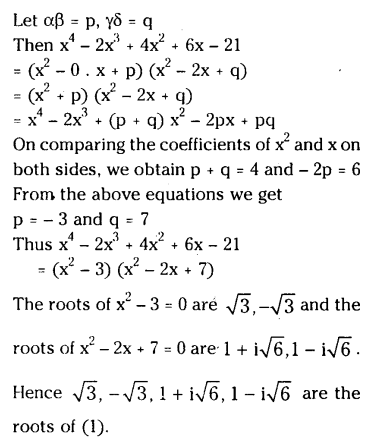
Question 17.
Solve 4x3 – 24x2+ 23x+ 18=0 given that the roots of this equation are in arithmetic progression.
Solution:
Let a – d, a, a + d be the roots of the given equation. These are in A.P. From the relation between the coefficients and the roots, we have
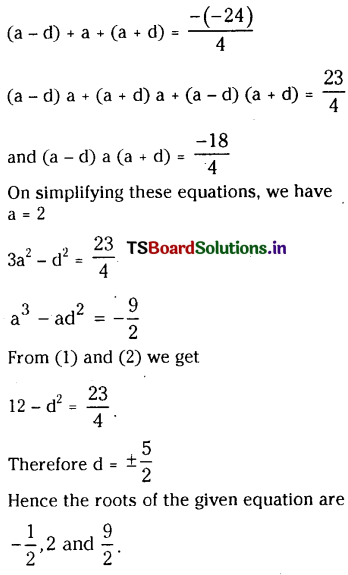
![]()
Question 18.
Solve x3-7x2+14x-8=0 given that the roots are in geometric progression.
Solution:
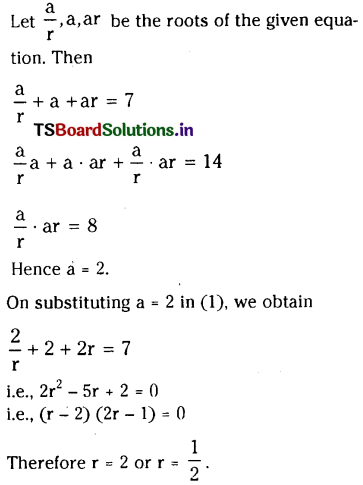
Hence the roots of the given equation are 1, 2 and 4.
Question 19.
Solve x4-5x3+5x2+ 5x – 6 = 0 given that the product of two of its roots is 3.
Solution:
Let α , β, γ be the roots of the given equation.
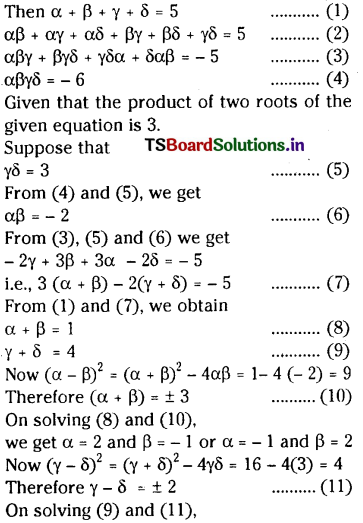
we get γ = 3 and δ = 1 or γ = 1 and δ = 3
Hence the roots of the given equation are 2,- 1, 3 and 1.
Question 20.
Solve x4+4x3– 2x4– 12x+ 9 = 0 given that it has two pairs of equal roots.
Solution:
Let the roots of the given equation be
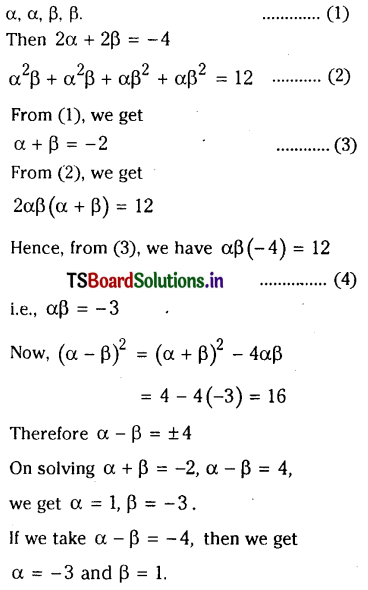
Therefore 1, 1, -3, -3 are the roots of the given equation.
![]()
Question 21.
Prove that the sum of any two of the roots of the equation x4 +px3 + qx2 + rx + s = 0 is equal to the sum of the remaining two roots of the equation if p3 – 4pq + Sr = 0.
Solution:
Suppose that the sum of two of the roots of the given equation is equal to the sum of the remaining two roots.
Let α, β, γ, δ be roots of the given equation such that α + β = γ + δ
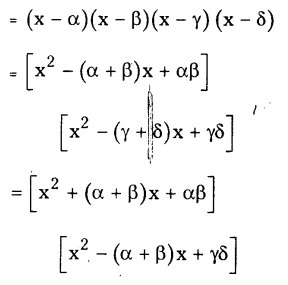
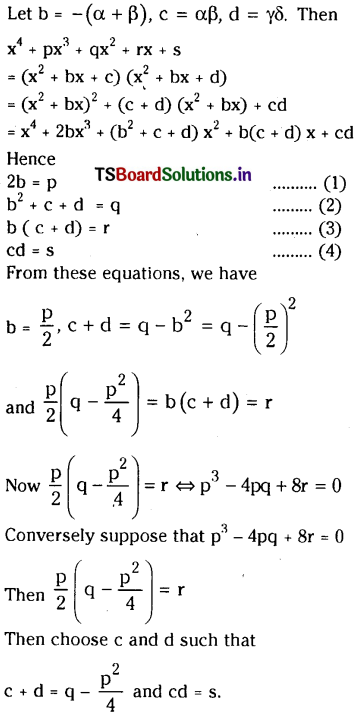
Take \(b=\frac{p}{2}\)
Then equations (1), (2) and (4) are satisfied.
In view of (5), equation (3) is also satisfied.
Hence (x2 + bx + c) (x2 + bx + d)
=x4+ 2bx3+(b2+c+d)x2+h(c +d)x+cd
= x4 +px3 +qx2 +rx+s
Hence the roots of the given equation are α1, β1,γ1 and δ1, where α1 and β1 are the roots of the equations
x2 + bx + c = 0 and γ1 and δ1 are those of the equation x2 + bx+ d = 0
We have α1 + β1 = -b = γ1 + δ1
![]()
Question 22.
Form the monic polynomial equation of degree 4 whose roots are \(4+\sqrt{3}, 4-\sqrt{3}\)
Solution:
The required equation is
\(\{\mathrm{x}-(4+\sqrt{3})\}\{\mathrm{x}-(4-\sqrt{3})\}\)
{x – (2+i)} {x – (2 – i)) =0
i.e., (x2 – 8x + 13) (x2 – 4x + 5) = 0
i.e., x2 – 12x3 + 50x – 92x + 65 = 0
Question 23.
Solve 6x4 -13x2 – 35x2 – x+3 = 0 given that one of its roots is \(2+\sqrt{3}\)
Solution:
Since \(2+\sqrt{3}\) is a root of the giver equation, by Theorem 4.3.9, \(2+\sqrt{3}\) is also a root of it. The quadratic factor corresponding to these two roots is x2 – 4x + 1.
On dividing 6x4 -13x1 – 35x2 – x + 3 by x2 – 4x + 1 (by synthetic division) weet the quotient 6x2 + 11x + 3.
Therefore 6x – 13x3 – 35x2 – x + 3 =(x2– 4x+ 1) (6x2+ 11x+3)
Hence the other roots are obtained from 6x2 + 11x + 3 = 0
On solving this equation, we get
\(\mathrm{x}=-\frac{1}{3} \text { or }-\frac{3}{2}\)
Thus the roots of the given equation are
\(-\frac{1}{3},-\frac{3}{2}, 2 \pm \sqrt{3}\)
Question 24.
Find the polynomial equation of degree 4 whose roots are the negatives of the roots
of x4 – 6x3 +7x2 – 2x + 1 = 0.
Solution:
Let f(x) = x4 – 6x3 +7x2 – 2x + 1
By Theorem 4.4.1, the equation (- x) = 0 has the desired property.
We have
f(-x) = (-x)4 – 6(-x)3. 7(-x)2 – 2(-x) + 1
= x4+6x3+7x2+2x+ 1
Hence x4 – 6x3 +7x2 – 2x + 1 + 6x3 + 7x2 + 2x+ 1 = 0 is the desired equation.
Question 25.
Find an algebraic equation of degree 4 whose roots are 3 times the roots of equation 6x4 – 7x3 + 8x2 – 7x + 2 = 0.
Solution:
Let f(x) = 6x4 – 7x3 + 8x2 – 7x + 2
By Theorem 4.4.3, the equation
\(f\left(\frac{x}{3}\right)=0\) has the desired properties. We have
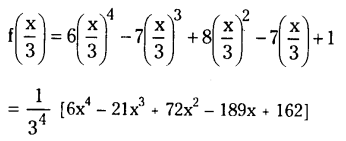
Hence 6x4– 21x3+72x2-189x +162 = 0 is the desired equation.
Question 26.
Form the equation whose roots are m times the roots of the equation
\(x^3+\frac{1}{4} x^2-\frac{1}{16} x+\frac{1}{72}=0\) and deduce the case when m = 12.
Solution:
From the note 4.4.2 and note 4.4.4., it follows that

is a polynomial equation of degree 3, whose roots are m times those of the given equation. On taking m = 12, equation (1) reduces to

![]()
Question 27.
Find the polynomial equation of degree 5 whose roots are the translates of the roots of x5+4x3 -x2+11 = 0 by – 3.
Solution:
By Theorem 4.4.6, the equation
(x+3)5+4(x+3)3_(x+3)2 +11 = 0 has the desired properties.
On simplifying the above equation, we get
x5 + 15x4 + 94x3 + 305x2 + 507x + 353 = 0.
The transformed equation can also be object by synthetic division
Let f(x) =x5+4x3-x2+ 11
Suppose that f(x + 3) A0x5 + A1x4 + A2x3 + A3x2 + A4x + A5
Then by note 4.4.8, the coefficients
A0, A1 , …………………………. A5 can be obtained as follows
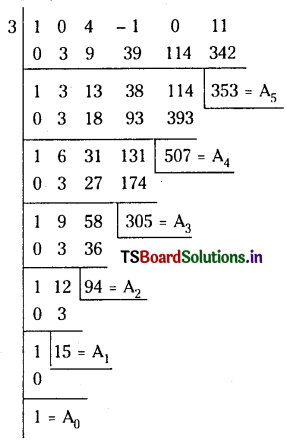
Therefore the roots of the equation
x5 + 15x4 + 94x3 + 305x2 + 507x + 353 = 0 are the translates of the roots of the given equation by – 3.
Question 28.
Find the algebraic equation of degree 4 whose roots are the translates of the roots of 4x4 + 32x3 + 83x2 + 76x + 21 = O by 2.
Solution:
By Theorem 4.4.6, the equation
4 (x – 2)4 + 32 (x – 2)3 + 83 (x – 2)4+76(x-2) + 21 =0 has desired properties.
On simplifying the above equation, we get 4x4– 13x2+90
Other mehod: The equation A0x4 . A1x3 +………… + A4 = 0 whose coefficients are obtained by synthetic division as given below, has the desired properties
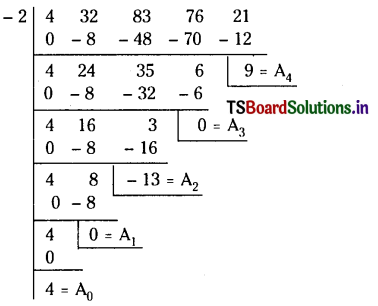
Hence the equation 4x4 – 13x2 + 9 = 0 has the desired properties.
Question 29.
Find the polynomial equation whose roots are the reciprocals of the roots of the equation x4 + 3x3 – 6x2 + 2x – 4 = 0.
Solution:
Let f(x) = x4 + 3x3 – 6x2 + 2x – 4
By theorem 4.4.9, the equation
\(x^4 f\left(\frac{1}{x}\right)=0\) has the desired properties.
Therefore
\(x^4\left[\frac{1}{x^4}+3 \frac{1}{x^3}-6 \frac{1}{x^2}+\frac{2}{x}-4\right]=0\)
i.e., 4x4 – 2x3 + 6x2 – 3x – 1 = 0 is the required equation.
Question 30.
Find the polynomial equation whose roots are the squares of the roots of x3– x2 + 8x – 6 = 0.
Solution:
Let f(x) = x3– x2 + 8x – 6 = 0.
Then as per the notation introduced in Note 4.413, we have
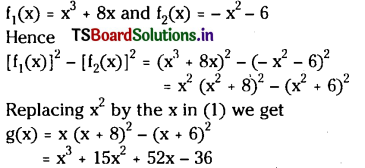
The equation x3+ 15x2 + 52x -36 = 0 has the desired properties.
![]()
Question 31.
Show that 2x3+5x2+5x+2=0 is are reciprocal equation of class one.
Solution:
Let f(x) = 2x3+5x2+5x+2=0
Then 2 is the leading coefficient.
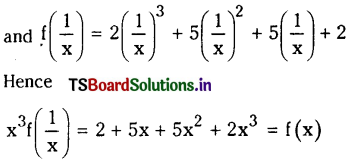
Therefore the given equation is a reciprocal equation of class one.
Question 32.
Solve the equation 4x3 -13x2 – 13x + 4 = 0.
Solution:
The given equation is an odd degree reciprocal equation of class one.
By Note 4.4.24(1), – 1 is a root of this equation.
Therefore (x + 1) is a factor of
4x3 -13x2 – 13x + 4
Hence on dividing this expression by(x + 1), we get
4x3 -13x2 – 13x + 4 (x + 1)(4x2 – 17x+ 4)
Now the roots of the equation
4x2– 17x+4=0 are \(\frac{1}{4}\) and 4.
Therefore -1,\(\frac{1}{4}\),4 are the roots of the given equation.
Question 33.
Solve the equation
– 5x4 + 9x3 – 9x2 + 5x – 1 = 0.
Solution:
We observe that the given equation is an odd degree reciprocal equation of class two.
By Note 4.4.24(1), 1 is a root of this equation.
Therefore (x – 1) is a factor of x5 – 5x4 + 9x3– 9x2 + 5x – 1.
On dividing this expression by (x – 1), we get
x4 – 4x3 + 5x2 – 4x + 1 as the quotient.
Now we have to solve the equation
x4 – 4x + 5x2 – 4x + 1 = 0
On dividing this equation by x2, we get
x2– 4x+5 –\(\frac{4}{x}+\frac{1}{x^2}\) = 0
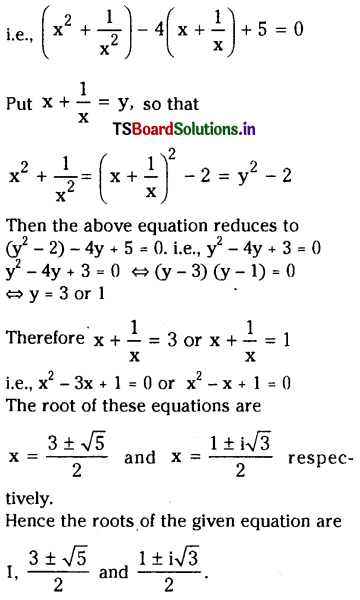
Question 34.
Solve the equation 6x4-35x3+62x2-35x+6=0.
Solution:
We observe that the given equation is an even degree reciprocal equation of class one.
On dividing both sides of the given equation by x2, we get
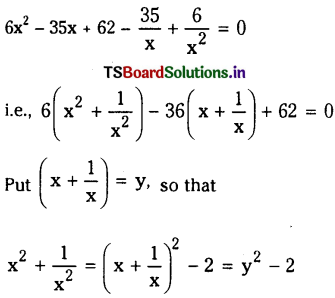
Then the above equation reduces to
6 (y2-2) – 35y + 62 = 0
i.e., 6y2 – 35y + 50 = 0
i.e., (2y – 5) (3y – 10) = 0
Hence the roots of
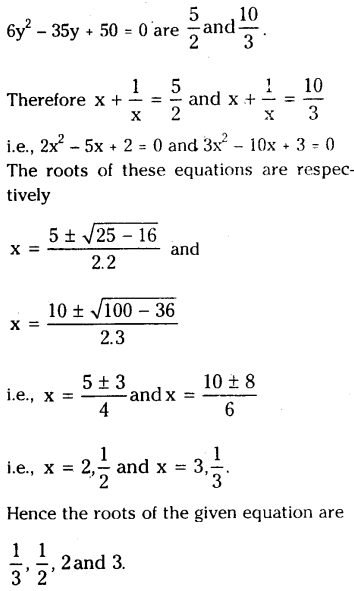
![]()
Question 35.
Solve the equation
6x6 – 25x5 + 31x4 -31x2 + 25x – 6 = 0.
Solution:
We observe that the given equation is an even degree reciprocal equation of class two. By Note 4.4.24(2), + 1 and – 1 are the roots of this equation. Hence (x + 1) and (x – 1) are the factors of the given equation.
Let f(x) = 6x6 – 25x5 + 31x4 -31x2 + 25x – 6 = 0
On dividing this expression by (x + 1) and then by (x – 1), we get
f(x) = (x2 -1) (6x4 – 25x3 + 37x2 – 25x + 6)
Now we have to solve the equation
6x4 – 25x3 + 37x2 -25x + 6 = 0
On dividing both sides of this equation by x2, we obtain
